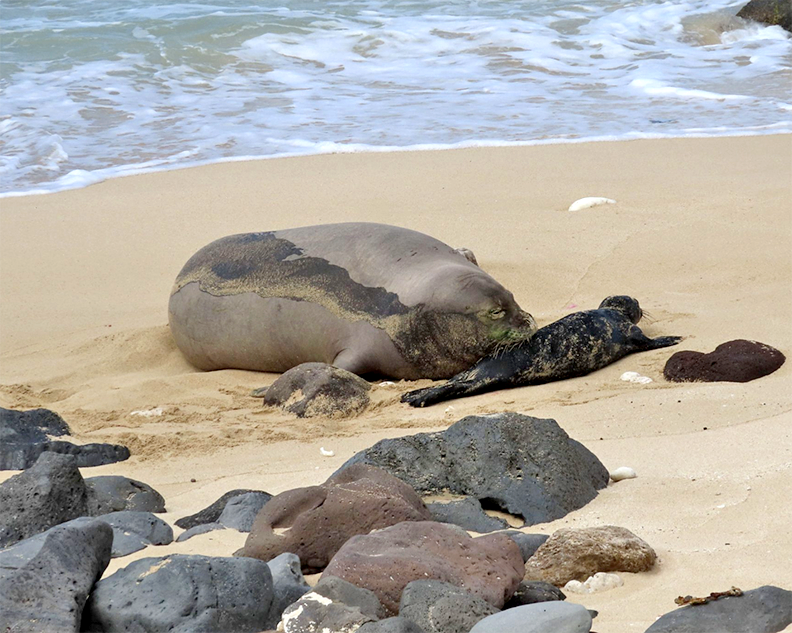
Nene goose at Kilauea National Wildlife Refuge Complex. USFWS photo by Brenda Zaun
Nurturing Lessons from Failures
by Jan TenBruggencate
Much of the environmental nurturing we’re doing in the Islands is the direct result of our earlier environmental failures—whether conscious failures or not.
Take birds.
We’ve lost many of the Hawaiian archipelago’s native birds due to such imports as avian malaria. Malaria only spreads through mosquitoes, and humans certainly didn’t purposefully import mosquitoes. But sure enough, in a whaling ship’s water barrel in 1826, the annoying wigglers were present and mosquitoes found their way ashore.
We have lost others, presumably, due to over-harvesting. One can only assume that’s how we lost the giant goose-like moa nalo, a turtle-jawed flightless duck that waddled our islands before humans arrived.
(It’s beyond the scope of this article, but biologists David and Lida Burney are experimenting with using tortoises in native forest settings at Maha`ulepu to fill the ecological niche vacated by the moa nalo.)
Many birds disappeared purely through habitat loss, which removes not only perching and nesting habitat but also the food plants many species require.
Early voyagers left rabbits on many small islands, presumably to provide familiar food for future travelers or victims of shipwrecks. The rabbits munched down the vegetation, and inadvertently destroyed the habitat for many native birds.
On Laysan Island, rabbits were introduced for food about 1903. Within 10 years, the green island turned brown, and several native land birds went extinct. One was the Laysan subspecies of our red forest bird, the `apapane. Another was the Laysan millerbird.
But during the past two years, millerbirds have been reintroduced to Laysan—now that rabbits are long gone and some of the native vegetation has been restored. They’ve been brought from Nihoa Island, where a closely related subspecies, the Nihoa millerbird, still exists.
Fifty millerbirds have been collected and transferred to Laysan, giving the species sufficient genetic diversity to establish a second healthy population, and also giving them a second home and thus a better chance at long-term survival.
One of the bird species that survived on Laysan, the Laysan duck or teal, has recently been collected and a small portion of its population moved to Midway Atoll. It’s doing well there, despite its habitat being damaged by the 2011 Japan tsunami.
Fossil records show that the small dabbling ducks were once found throughout the Hawaiian archipelago. They could appropriately be re-established on other Hawaiian islands, as well—including Kaua`i, where they once thrived, according to the fossil record.

Nene goose at Kilauea National Wildlife Refuge Complex. USFWS photo
Here on Kaua`i, the native goose that is the state bird, the nene, had long disappeared. But Jack Waterhouse at the ranch at Kipu Kai, acquired and kept some captive geese. Hurricane `Iwa busted the pens. The escaped birds thrived.
Wildlife officials captured nene from other islands and released more. Today, vee-shaped flights of geese are a common sight on the island.
But it is not yet clear what the impact will be of the arrival of the mongoose on Kaua`i. Based on its impact on the other islands, where ground-nesting birds have become vanishingly rare or extinct, it won’t be good.

Jan TenBruggencate
Jan TenBruggencate is a beekeeper, an author and the former science writer for The Honolulu Advertiser. He operates a communications company, Island Strategy LLC. He serves on the board of the Kaua’i Island Utility Cooperative and on the County Charter Review Commission.
Discover more from ForKauaiOnline
Subscribe to get the latest posts sent to your email.




Leave a Reply